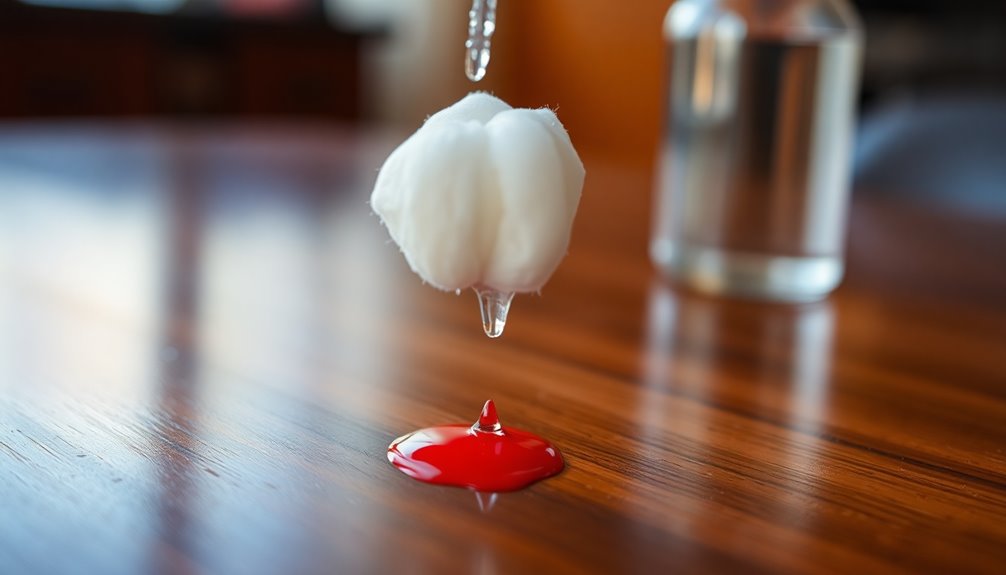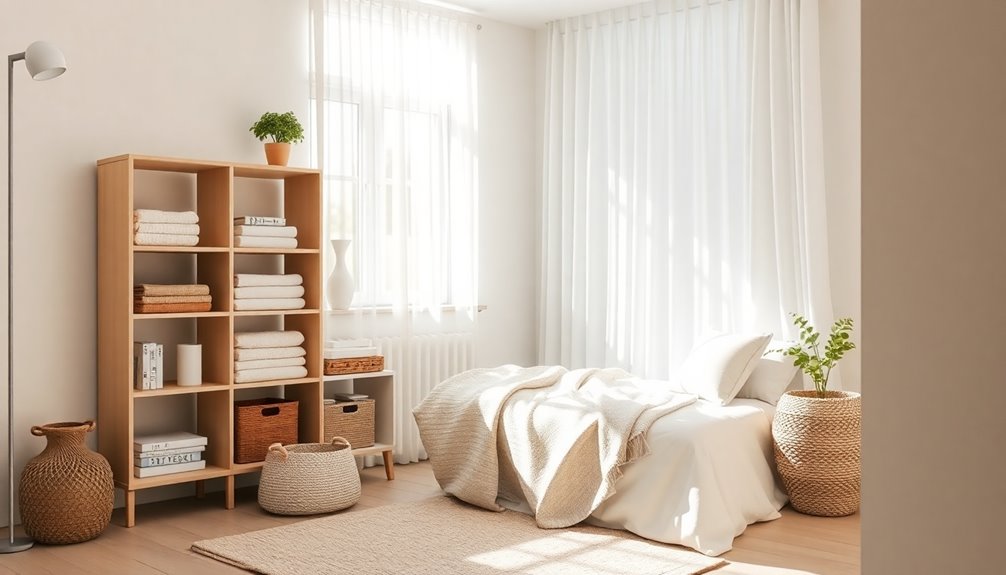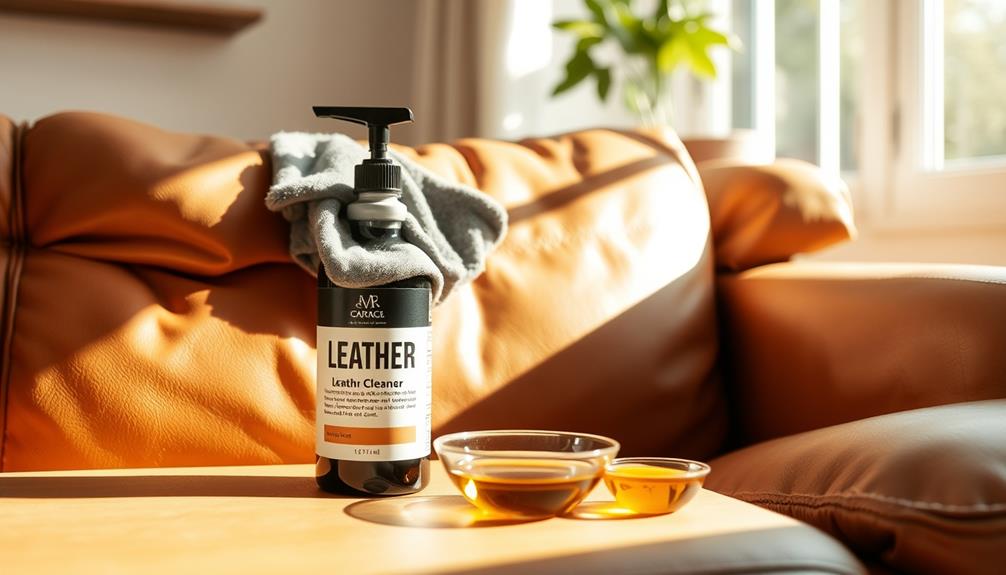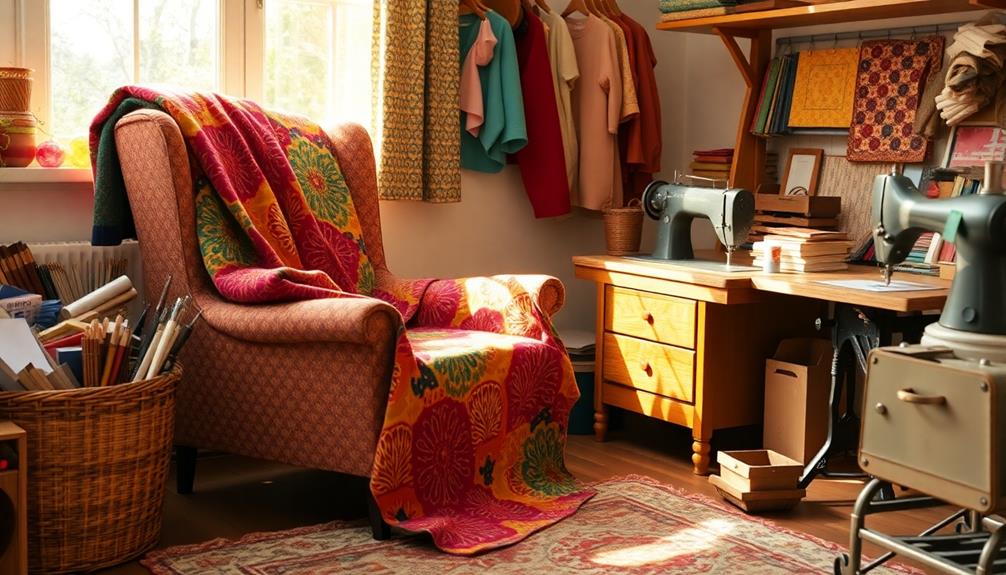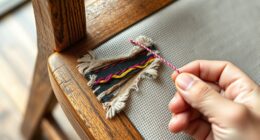To remove nail polish from your furniture, act fast. For wood, sprinkle sugar or salt on fresh spills, let it sit, then scrape gently. For dried polish, spray with hairspray and dab with a cloth. If it's upholstery, blot with paper towels first; for dried stains, use rubbing alcohol or a dry cleaning solvent. On leather, scrape excess polish off carefully, then clean with a mixture of vinegar and olive oil. Always test any solution on an inconspicuous area first to prevent damage. There are more tips and tricks out there to help you achieve a spotless finish.
Key Takeaways
- For fresh spills, quickly absorb nail polish with sugar or salt before scraping gently to remove the stain.
- Test non-acetone removers or rubbing alcohol on hidden areas to prevent damage before application.
- For dried stains, use aerosol hairspray or rubbing alcohol, applying it gently and blotting in circular motions.
- After stain removal, clean the area with wood oil soap and water to restore shine and finish.
- Avoid acetone-based products on finished wood surfaces to prevent further damage.
Removing Nail Polish From Wood
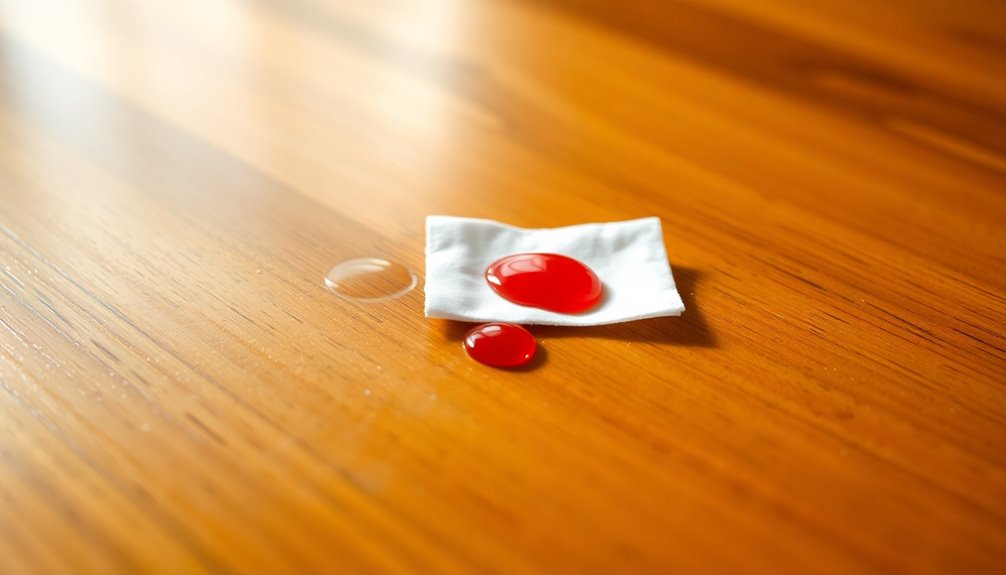
When you accidentally spill nail polish on wood furniture, quick action is key. Sprint to the kitchen and grab sugar or table salt. This household item can absorb the fresh spill before it sinks into the wood grain. Cover the stain generously with the sugar or salt and let it sit for a few minutes. Afterward, use a plastic scraper to gently lift away the hardened clumps of nail polish mixed with the absorbed substance.
If the polish has dried, don't panic. Spray the stain with aerosol hairspray and let it sit for about a minute. Then, use a cotton ball or cloth to dab and wipe the stain, making sure to follow the wood grain. For tougher stains, mix hot, soapy water with the hairspray. If needed, you can use non-acetone nail polish remover or rubbing alcohol, but always test on a hidden spot first to ensure it won't damage the finish. Remember, fresh spills require immediate attention to prevent deeper penetration into wood.
Finally, after successfully removing the stain, wash the area with a mix of wood oil soap and water to restore the shine. Remember, prevention is better than cure—lay down newspaper before your next nail session!
Removing Nail Polish From Upholstery
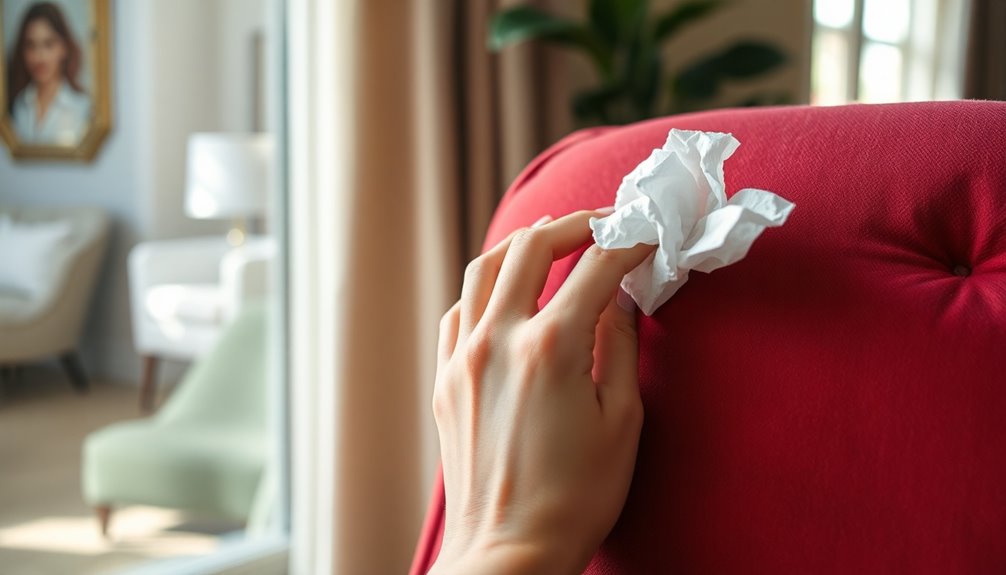
Accidentally spilling nail polish on upholstery can be frustrating, but tackling the stain promptly can make a big difference. Start by removing as much excess nail polish as you can without rubbing it into the fabric. Use a paper towel, spoon, or putty knife to carefully lift the polish, blotting from the outside in to avoid spreading the stain.
For fresh stains, blot with paper towels to absorb the polish. If the polish has dried, gently scrape it off using a butter knife or more paper towels. Avoid rubbing, as this can embed the polish deeper into the fibers.
Next, apply rubbing alcohol or a dry cleaning solvent to a cloth and blot the stain in a circular motion. Always test the solvent on an inconspicuous area first to ensure it won't damage the fabric. Acting quickly is essential to prevent deeper penetration of polish, so repeat the blotting until the stain is gone, then rinse with warm water to remove any solvent residue.
If the stain persists, mix one tablespoon of liquid dish soap with two cups of cool water. Dab this solution onto the stain. Finally, let it air dry and brush the fabric to restore its appearance.
Removing Nail Polish From Leather
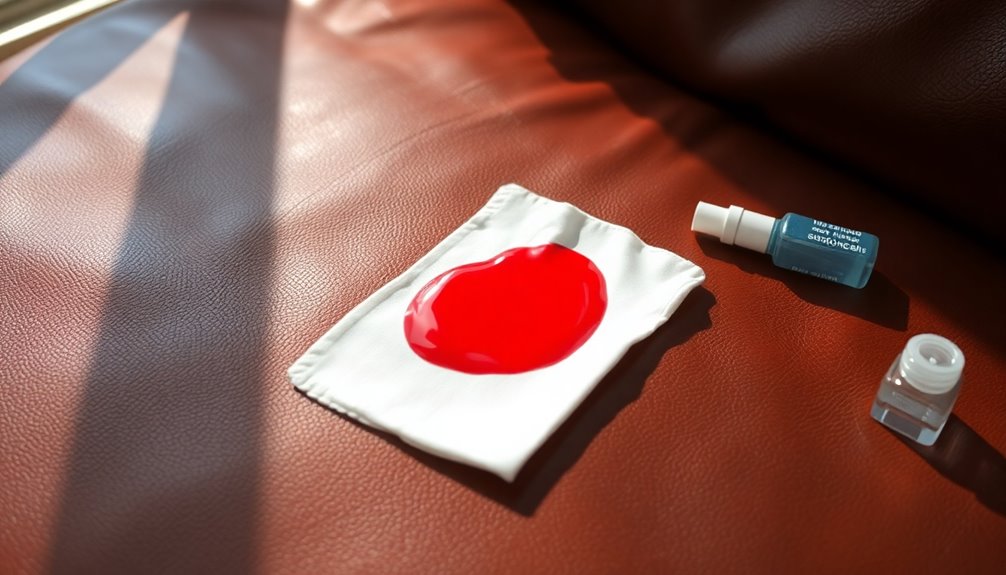
Spilling nail polish on leather can be just as frustrating as it is on upholstery, but you can effectively tackle the stain with the right approach. First, if the polish hasn't dried, use a blunt knife or spatula to remove the excess. If it has dried, gently peel off what you can with your fingernail. Blot the area with a clean, soft cloth to absorb as much polish as possible. For larger spills, dab the area with paper towels or clean cotton rags to avoid spreading.
Next, apply a cleaning solution. Mix one part white vinegar with two parts olive oil, and use an old toothbrush to help flake off the polish. Alternatively, you can use rubbing alcohol on a cotton swab, or try non-acetone nail polish remover on a cotton pad. Always test any solution on an inconspicuous area first to prevent damage. Rubbing alcohol is a common disinfectant and is less risky for genuine leather.
After removing the stain, treat the leather with a genuine conditioner or a mix of white vinegar and linseed oil. Buff the area with a clean cotton cloth and ensure it air dries completely to maintain the leather's appearance.
Alternative Removal Methods
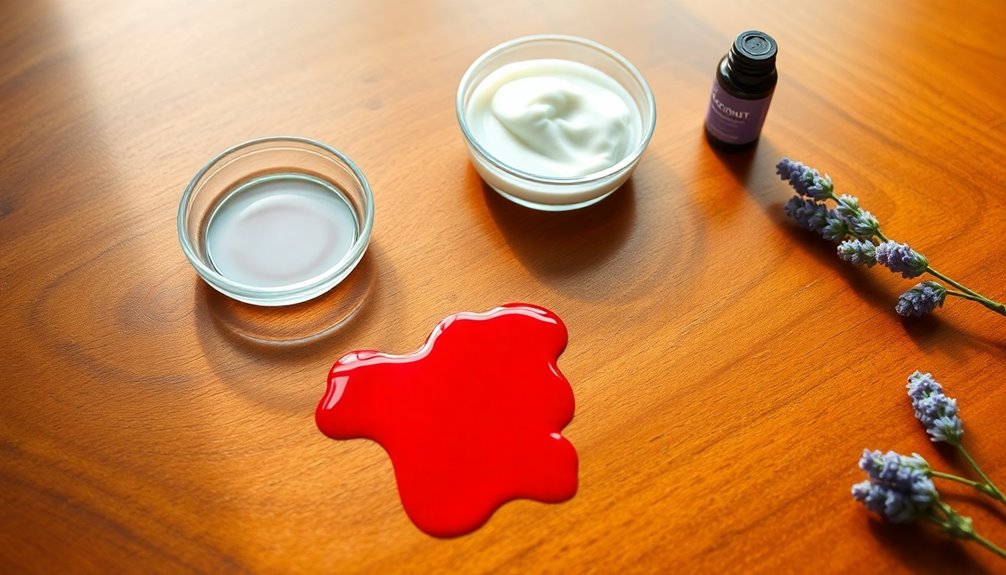
Finding effective alternative removal methods for nail polish stains can save your furniture from permanent damage. Start by absorbing any excess polish with paper towels. Lay them gently on top of the stain, replacing them as needed until no more polish is absorbed. For delicate fabrics, place paper towels beneath the stain to prevent seepage, and use microfiber cloths for gentle blotting. Once you’ve blotted the area, consider using a mixture of mild soap and water to further clean the stained surface. Dampen a cloth with the solution and gently wipe the area, being careful not to saturate the fabric or wood. For tougher stains, using a specialized wood cleaner can be an effective way to remove stains from wood furniture without causing damage. Always remember to test any cleaning method on a small, inconspicuous area first to ensure it won’t worsen the stain or damage the material.
Next, consider eco-friendly cleaners. You can apply liquid dish soap with cotton swabs or soak the stain in hairspray for 10 minutes before blotting. Distilled white vinegar is another option that dissolves nail polish, while hydrogen peroxide can be used as a last resort on dark carpets. If you're sensitive to the vinegar smell, add essential oils to mask the odor. Additionally, for any finished wood surfaces, it's important to avoid using acetone, as it can cause significant damage.
Non-acetone removers are also effective. Use acetone-free nail polish remover with cotton swabs, but always test it on an inside seam first. For an alternative solvent, try rubbing alcohol.
Finally, household products like baking soda can absorb the polish. After applying it, gently brush off the powder with a toothbrush, then use cold water to rinse. Remember to let the fabric air dry to avoid setting the stain.
Preventing and Treating Damage
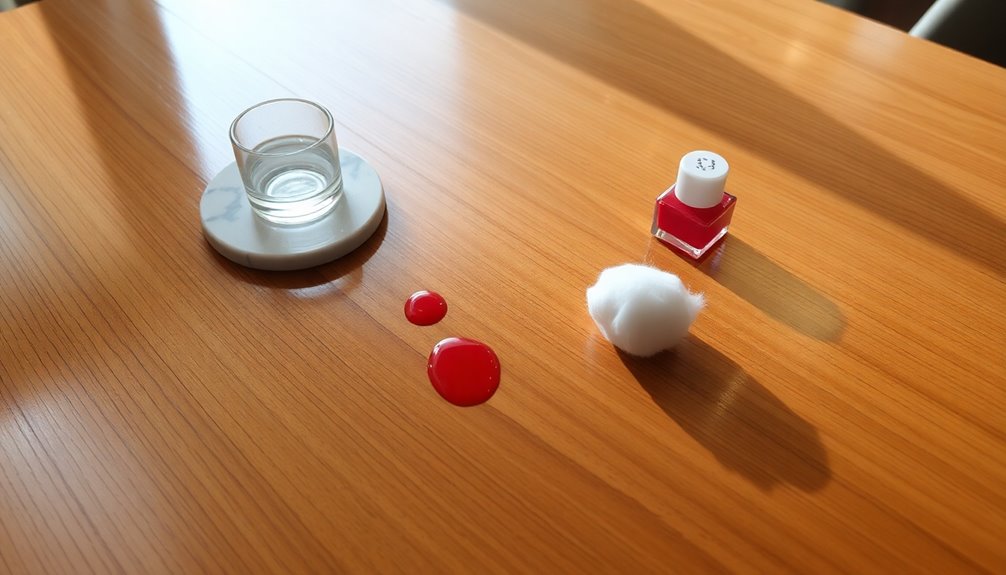
To prevent damage when removing nail polish from furniture, it's essential to choose the right methods and products carefully. Avoid using acetone-based removers, as they can dissolve finishes like lacquer or shellac. Instead, opt for non-acetone options. Use a cotton ball or pad to apply the remover, focusing solely on the nail area to minimize contact with your furniture.
Always work in a well-ventilated space to reduce exposure to chemical fumes. Wear gloves to protect your skin from harsh chemicals, and keep children and pets away from the area to prevent accidents. Before applying any product, identify vulnerable surfaces. Perform a patch test on a small, inconspicuous area to ensure the method won't damage or discolor the finish. Understanding the wood's porous nature can help you choose the most effective cleaning method for your specific furniture.
If you notice minor damage, use wood touch-up markers to spot treat the affected area. Lightly sand any unfinished spots and blend them with an oil-based finish applied using a touch-up brush. For small spots missed during removal, hairspray can help. Just let it sit briefly and wipe away the residue. If the damage is extensive or on valuable furniture, seek professional help to avoid further issues.
Frequently Asked Questions
Can I Use Nail Polish Remover on All Furniture Types?
You can't use nail polish remover on all furniture types. Acetone, a common ingredient, can damage finishes on wood, laminate, and softer materials like lacquer or shellac. Even hardwood with a durable finish might be at risk. If you must, test in a hidden area first. Instead, consider alternatives like rubbing alcohol or acetone-free removers to protect your furniture while still getting rid of that pesky nail polish stain. Always prioritize caution!
What Should I Do if the Stain Persists?
If the stain persists, don't get discouraged! You can try applying a paste of baking soda and water, letting it sit for 10-15 minutes before blotting it off with a damp cloth. Alternatively, use a solution of white vinegar and water, or a gentle soap solution, and scrub lightly with a toothbrush. Always remember to dab, don't rub, to avoid spreading the stain further. Repeat these methods as needed for effective results.
How Can I Protect My Furniture From Future Stains?
To protect your furniture from future stains, start by applying a quality fabric protector. This creates a barrier against spills and grime, so choose one with UV protection to keep colors vibrant. Regularly vacuum your furniture to prevent dirt buildup, and clean any spills immediately. For high-traffic areas, consider using covers or protective throws. Finally, maintain your furniture by using mild cleaners and rotating cushions to ensure even wear.
Is There a Specific Time Frame for Treating the Stain?
There's no strict time frame for treating a stain, but acting quickly is crucial. Aim to address it as soon as you notice it—ideally while it's still wet. If the stain's dried, you can still remove it, but the process might take a bit more effort. Always keep in mind that the sooner you tackle it, the better your chances are of restoring the surface without lasting damage.
Can I Use Household Items to Prevent Stains?
Yes, you can use household items to prevent stains! Start by applying a fabric protector spray on upholstery and carpets to create a barrier against spills. For wooden surfaces, regularly polish with a suitable product to maintain the finish and prevent absorption. If you're worried about stains on leather, use a specialized leather conditioner. Always remember to test any product on a small area first to ensure it doesn't cause damage.
Conclusion
In conclusion, removing nail polish from furniture doesn't have to be a daunting task. By using the right techniques for wood, upholstery, or leather, you can effectively tackle those pesky stains. Always remember to test any cleaner on a hidden area first to avoid damage. With a bit of care and attention, you can keep your furniture looking great and free from nail polish mishaps. Prevention is key, so be cautious when doing your nails near your furniture!
